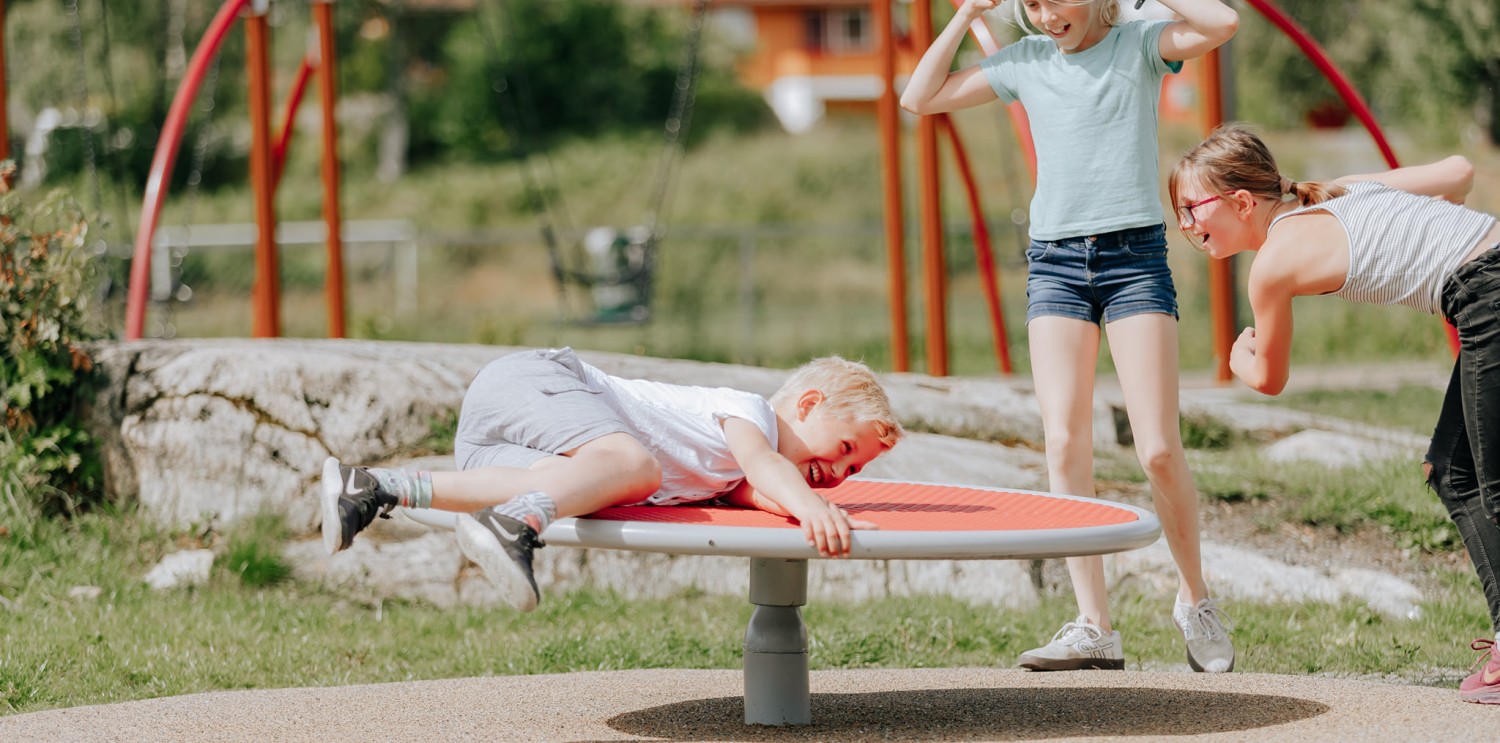
The Magic of Sensory Playground
The world as we see it is a myriad of sights, sounds, smells, and sensations. Children, as they explore their environment, naturally seek sensory experiences. These experiences not only nourish their minds but also pave the way for essential cognitive, social, and physical development. This is where the concept of a sensory playground comes into play.
What is a Sensory Playground?
A sensory playground is fundamentally crafted to serve as a sanctuary for rich sensory encounters. Its primary objective is to engage and stimulate the various senses of a child. Here's a breakdown:
- Touch: The playground will have a variety of textures and materials. This could range from soft sand to rough logs, smooth slides, and squishy play materials. By interacting with these different textures, children can develop their tactile sense and learn to differentiate between various sensations.
- Sight: Visual elements play a crucial role. Bright colors, moving parts, and varying shapes are incorporated to captivate a child's attention. These elements not only make the playground visually appealing but also help in developing a child's visual perception and recognition skills.
- Sound: Soundscapes can be created using different elements. Wind chimes, musical instruments, or even the rustling of leaves can be incorporated. These auditory elements help children differentiate between various sounds and also develop their listening skills.
- Proprioception: This refers to the sense of self-movement and body position. Equipment like swings, roundabouts and climbing structures can help children understand the position of their body in space. Engaging with such equipment can enhance their coordination, balance, and spatial awareness.
The Essentials of a Sensory Playground Equipment
Sensory panels and play boards
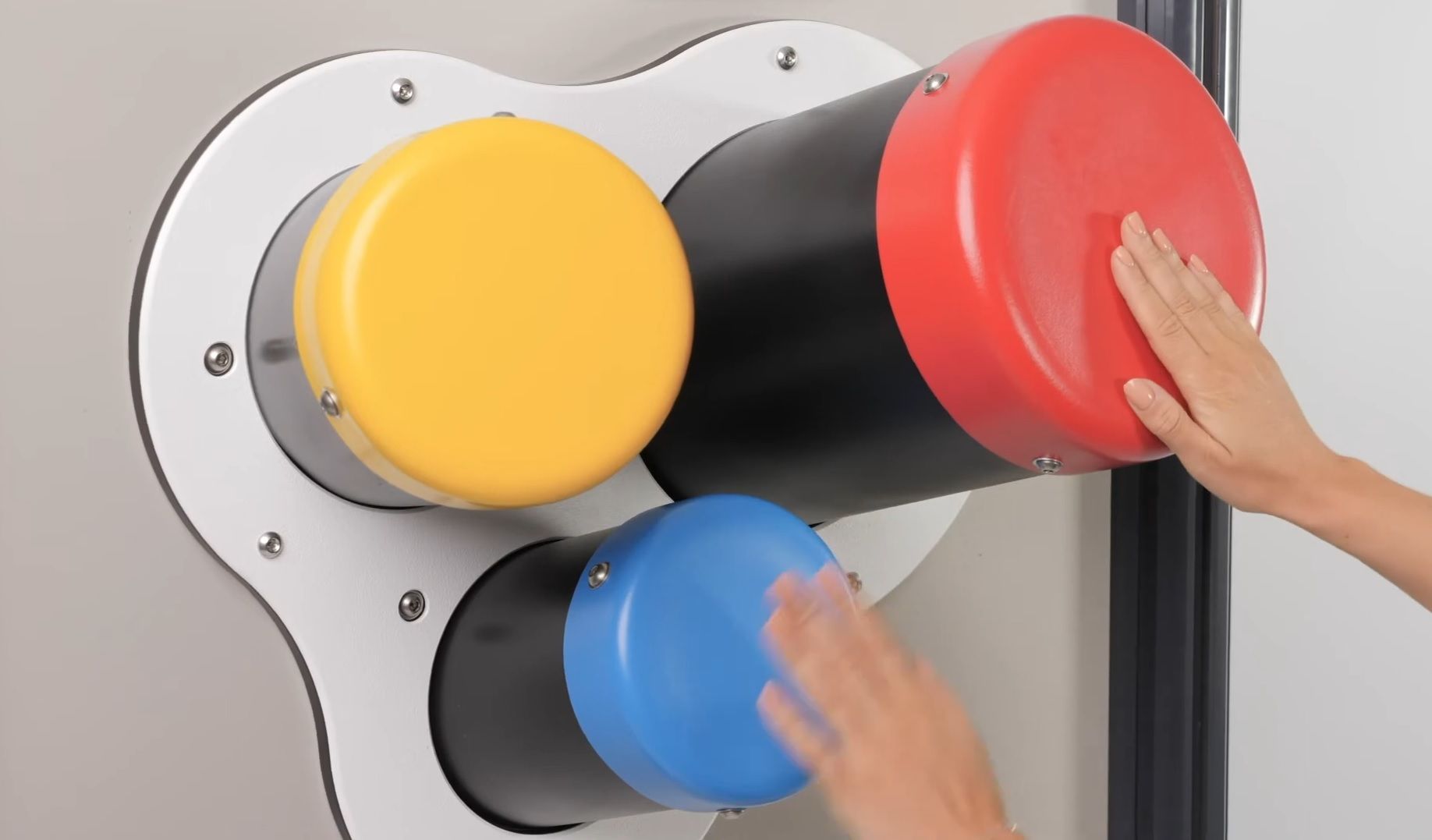
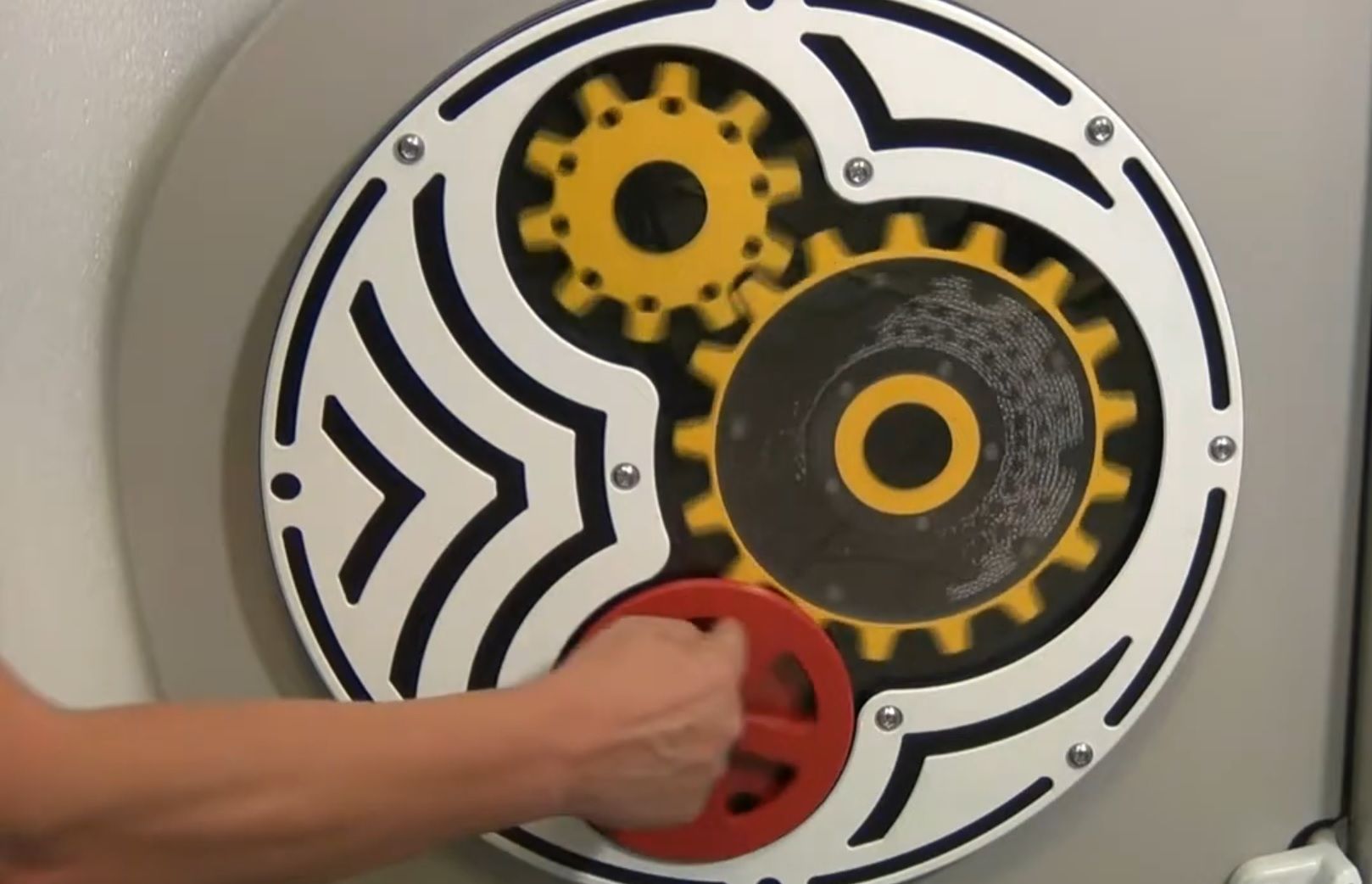
Sensory boards are multifaceted tools for children's development. They offer varied textures, from the tactile sensation of gears to the cascade of stainless steel balls. Each board produces unique sounds, with some integrating musical instruments like bongos or maracas. Designed with a vibrant color palette, they captivate children's attention and aid in color recognition. Some boards incorporate games. Beyond entertainment, they enhance fine motor skills, boost hand-eye coordination, and stimulate imagination. Crafted for inclusivity, they cater to every child's exploration and creativity.
Interested in enhancing sensory experiences? Explore our diverse range of sensory boards and discover the perfect fit for your needs here.
Sandboxes - perfect equipment for sensory playground
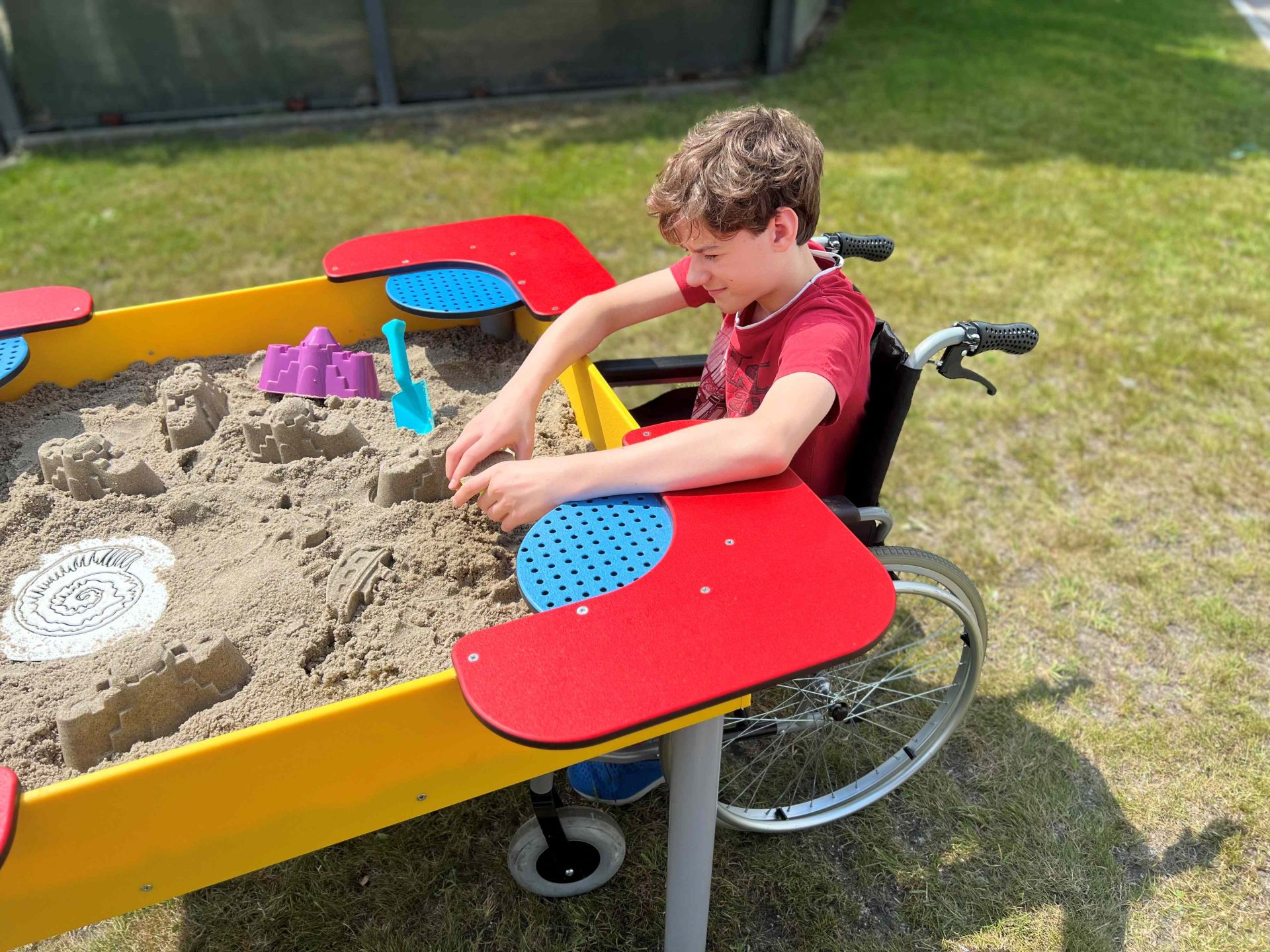
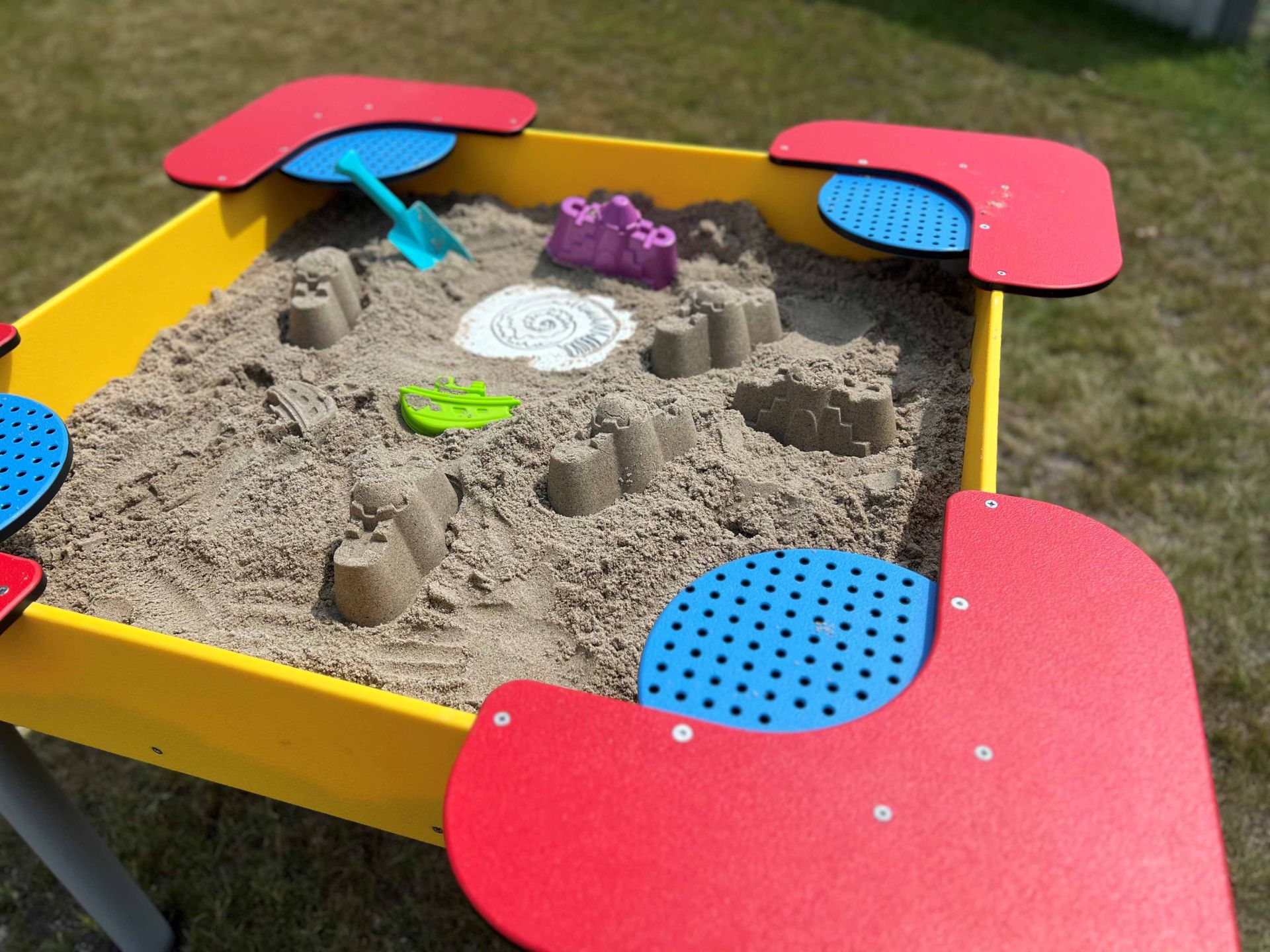
The sandbox, for generations, has been an essential element of the traditional playground. In the sensory context, it morphs into an arena for tactile exploration. Imagine a child's fingers sifting through sand, the gentle caress of grains, the joy of molding, and the sheer pleasure of touch. Incorporating toys or objects can further enrich this tactile experience, making it a delightful sensory adventure. Our sandboxes are equipped with useful tops for making sand cakes, sieves, and a handle for pouring sand. At the bottom of the sandboxes, there are attractive elements imitating fossils, like shells or bones. Additionally, we are proud to offer sensory sandboxes designed with inclusivity in mind, ensuring that children of all abilities, including those who use wheelchairs, can fully engage and enjoy this wonderful experience.
Explore our diverse range of inclusive sandboxes here.
Swings - A Symphony of Movement and Balance
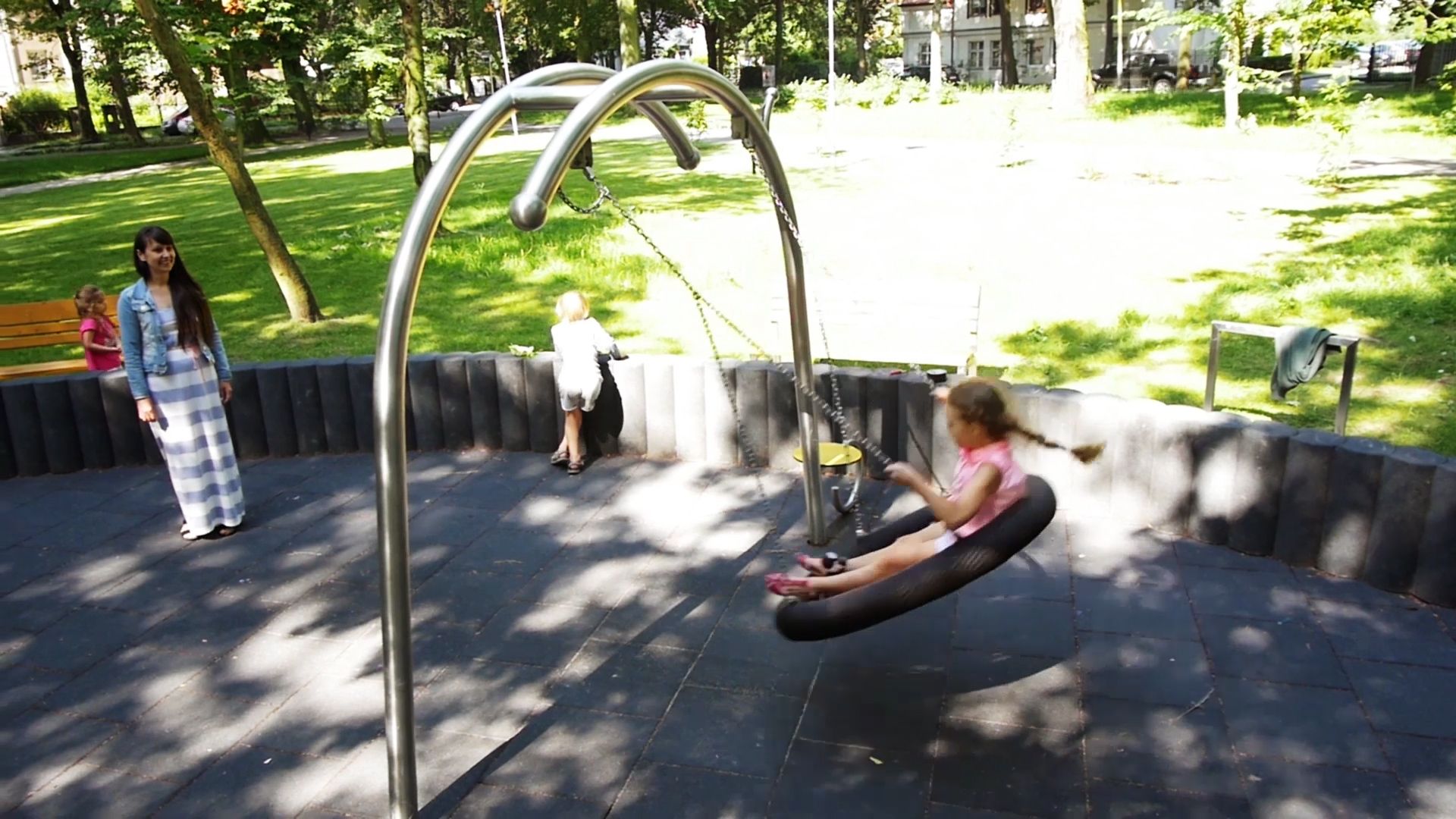
The humble swing is not just a seat suspended by chains. It's an orchestra of sensory experiences. Every sway, every push engages the child's vestibular system, contributing to balance and spatial orientation. Swinging side-by-side with a friend isn't just fun but also an enriching social interaction. Moreover, inclusive swings ensure that children of varied abilities can experience this joy together.
Interested in exploring our range of swings? Click here for more details.
Carousel: A Sensory Delight for Playgrounds
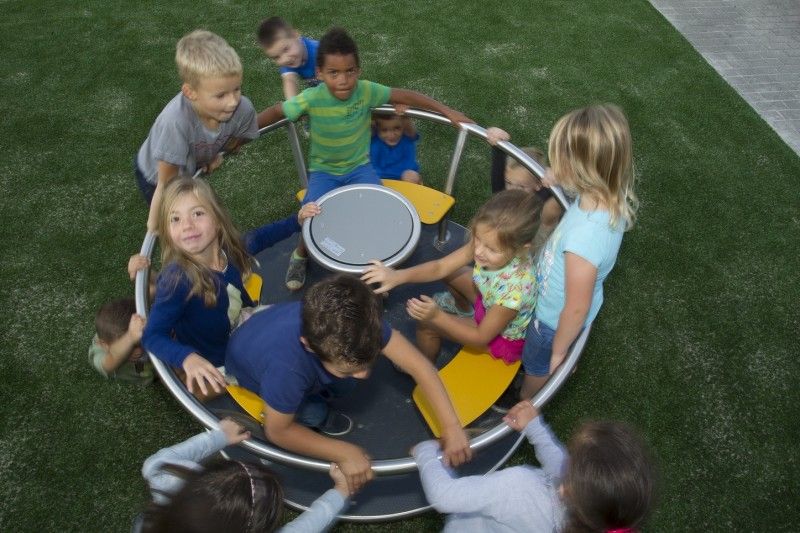
The carousel offers a dynamic sensory experience for its riders. As it spins, it provides vestibular stimulation, enhancing one's sense of balance and spatial orientation. The rhythmic movement can be both exhilarating and soothing, engaging multiple senses as the world whirls by. The tactile sensation of gripping the handles or mounts, combined with the visual and auditory delights of vibrant colors and traditional carousel music, creates a comprehensive sensory encounter that is both nostalgic and universally enjoyable.
Dive into our extensive carousel collection. Click here.
Benefits of a Sensory Playground
A sensory playground, specifically designed to stimulate various senses, offers a plethora of benefits for children of all ages and abilities. Here are some of the key advantages:
- Holistic Development: Sensory playgrounds cater to various senses, promoting overall cognitive, emotional, physical, and social development. They provide a multifaceted environment where children can learn and grow in a well-rounded manner.
- Enhanced Sensory Processing: For children with sensory processing disorders, regular exposure to varied sensory experiences can help them process and respond to sensory information more effectively, potentially reducing sensitivities or aversions over time.
- Inclusion and Diversity: Sensory playgrounds are often designed with inclusivity in mind. They cater to children with varying needs, including those with disabilities, ensuring everyone can play together, promoting understanding and acceptance.
- Improves Motor Skills: The equipment in sensory playgrounds often requires children to climb, swing, balance, and use their hands in various ways, aiding in the development of both fine and gross motor skills.
- Social Interaction: The diverse activities promote teamwork, cooperation, and communication among kids. Children learn the art of sharing, waiting their turn, and understanding the needs and feelings of others.
- Emotional Regulation: Sensory play can be calming for many children, especially those with sensory sensitivities or ADHD. Elements like water play, sand, or swinging can help children self-regulate, reduce stress, and manage anxiety.
- Promotes Creativity and Imagination: Sensory playgrounds provide varied stimuli that can spark a child's imagination. Whether they're building sandcastles, navigating through tactile mazes, or creating melodies on outdoor instruments, these experiences can foster creativity.
Sensory Gardens: The Perfect Addition to Sensory Playgrounds
Sensory gardens are curated spaces designed with the intention of stimulating all the senses. Just as a sensory playground uses equipment to engage a child's senses, a sensory garden utilizes nature's bounty to do the same. Here's why they make the perfect pairing:
- Stimulating the Sense of Touch: From the velvety petals of a rose to the spiky feel of some succulents, gardens have a plethora of textures waiting to be explored. This tactile experience can be both therapeutic and enlightening for kids and adults alike.
- A Treat for the Eyes: Blooms in a spectrum of colors, fluttering butterflies, and the play of sunlight and shadow can captivate and stimulate the visual sense. Such vibrant displays enhance spatial understanding and color recognition.
- Engaging the Sense of Smell: Fragrant flowers, aromatic herbs, and even the distinct scent of freshly watered soil can be invigorating. This olfactory engagement can have a calming effect and can even evoke memories and emotions.
- Tantalizing Taste Buds: With edible plants like berries, herbs, and vegetables, a sensory garden can also be a delightful gastronomic journey. Children can learn about where their food comes from and relish the fresh flavors of nature.
- Mindful Exploration: Sensory gardens, with their array of plants and features, promote mindfulness. They encourage children to slow down, explore, and immerse themselves in the natural world around them.
- Therapeutic Benefits: Such gardens can be particularly beneficial for individuals with sensory processing disorders, autism, or ADHD. The varied stimuli can help them process sensory information better, aiding in their cognitive and emotional development.
- Educational Opportunities: Beyond sensory benefits, these gardens serve as outdoor classrooms. Children can learn about plant life cycles, biodiversity, and even eco-responsibility.
- Enhancing Emotional Well-being: Nature has always been a solace for the human spirit. The combination of a sensory garden and playground offers children a space to not only play and learn but also to reflect, relax, and rejuvenate.
- Incorporating a sensory garden into a sensory playground brings together the best of both worlds, creating an environment that nourishes the body, mind, and soul. The symphony of natural elements and play equipment provides a comprehensive sensory experience that can greatly benefit everyone who steps into this realm.







